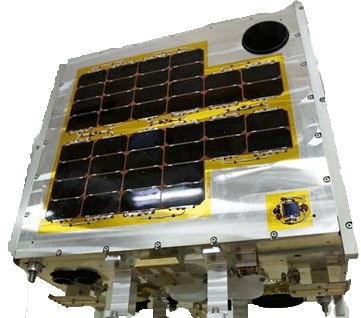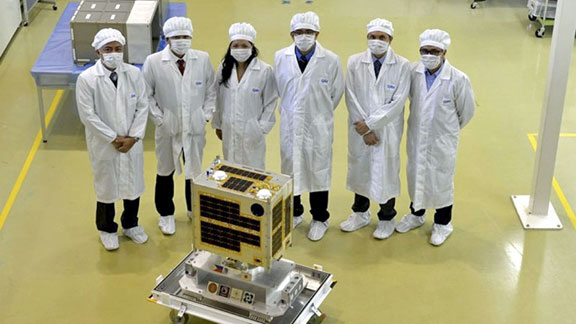
The Diwata smallsat.
[Satnews] Inquirer.net has reported that the Philippines have sent their third satellite into space.
Diwata, the first Filipino-made and co-developed microsatellite, officially called the Philippine Scientific Earth Observation Microsatellite (Phil-Microsat), was launched from Cape Canaveral Air Force Station in Florida onboard the Orbital ATK Cygnus spacecraft, all part of NASA's fifth resupply mission to the International Space Station.
The spacecraft should arrive at the ISS this coming Saturday. Philippines Science Secretary Mario Montejo said the launch of the microsatellite would further cement the belief that that nation's scientists and engineers can be on par with their foreign counterparts.
The Philippines first had a satellite in space, the privately owned Agila 1, in 1996, which was acquired from Indonesia and was launched from Cape Canaveral in 1991. The second Philippine satellite was Agila 2, also for communications, privately owned and launched from Sichuan, China, in 1997 and is now called ABS-3 after Mabuhay Satellite Communications, a subsidiary of Philippine Long Distance Telephone Co., sold it to Bermuda-based Asia Broadcast Satellite Holdings Ltd. for P400 million in 2009.

SCIENTISTS from the University of the Philippines and Department of Science and Technology officials turn over Diwata, the first Filipino co-developed microsatellite, to their counterparts at the Japan Aerospace Exploration Agency in Tsukuba City, Japan.
Carlos Primo David, executive director of the Philippine Council for Industry, Energy and Emerging Technology Research and Development, said that once Diwata is aboard the ISS, it will first be housed in the Japanese Experiment Module before it will be released into orbit between April 4 and 7. “By the time Diwata has been released into orbit, we will have full control of it. Initially, this will be controlled by our Filipino engineers who are stationed at Tohoku, Japan,” David told reporters. He added that control of Diwata will later be transferred to the Philippine Earth Data Resources Observation (Pedro) in Subic, Zambales province, which will receive and store data sent by the satellite.
The expectation is that Diwata will remain in orbit for about 20 months and will capture an average of 3,600 high-resolution images of the Philippines daily using its four cameras. Phil-Microsat program head Joel Marciano Jr. explained that Diwata is equipped with a high-precision telescope that is capable of determining the extent of damage from disasters; a space-borne multispectral imager with liquid crystal tunable filter that could monitor changes in vegetation and ocean productivity; a wide-field camera that could observe cloud patterns and weather disturbances; and a middle-field camera, an engineering payload that would be used to assist in determining the location of each image captured by the other optics.
Diwata’s launch comes more than two months since Filipino scientists and DOST officials turned over the microsatellite to their counterparts at the Japan Aerospace Exploration Agency, who sent the device to NASA after conducting final tests on its space worthiness.

